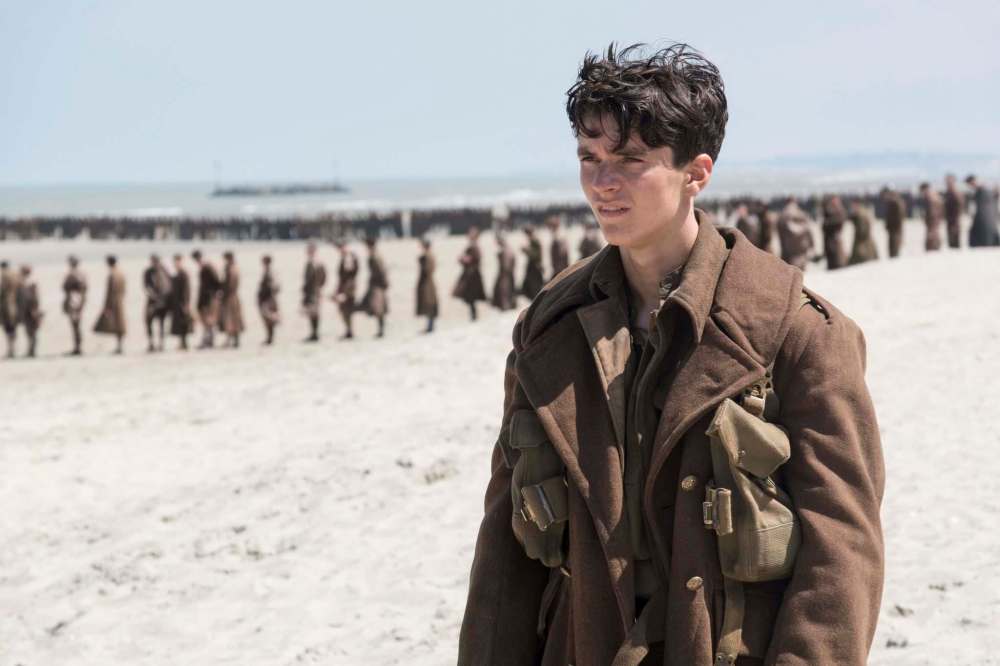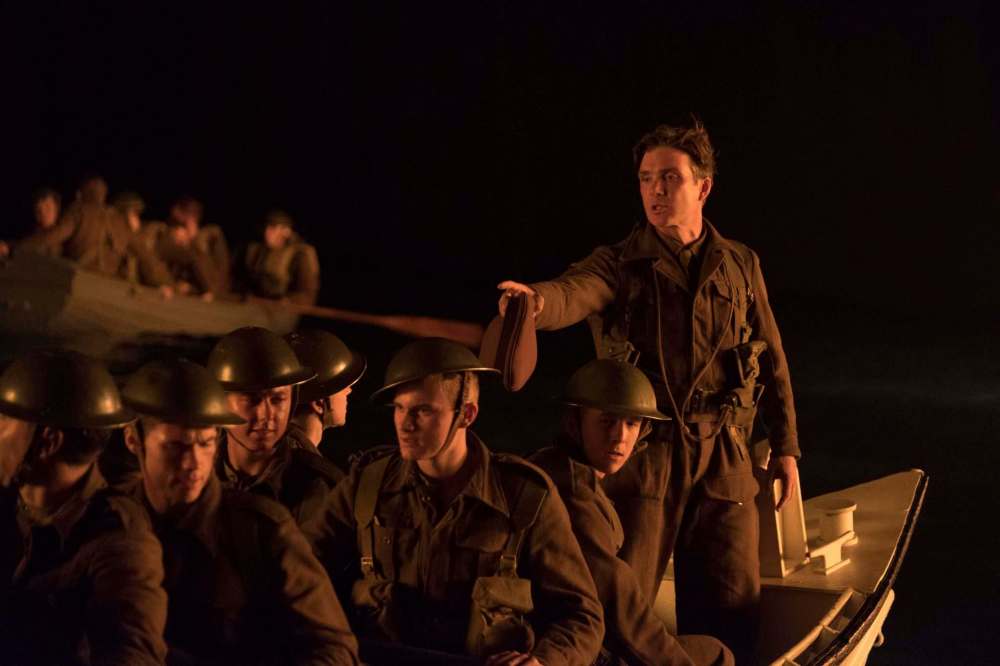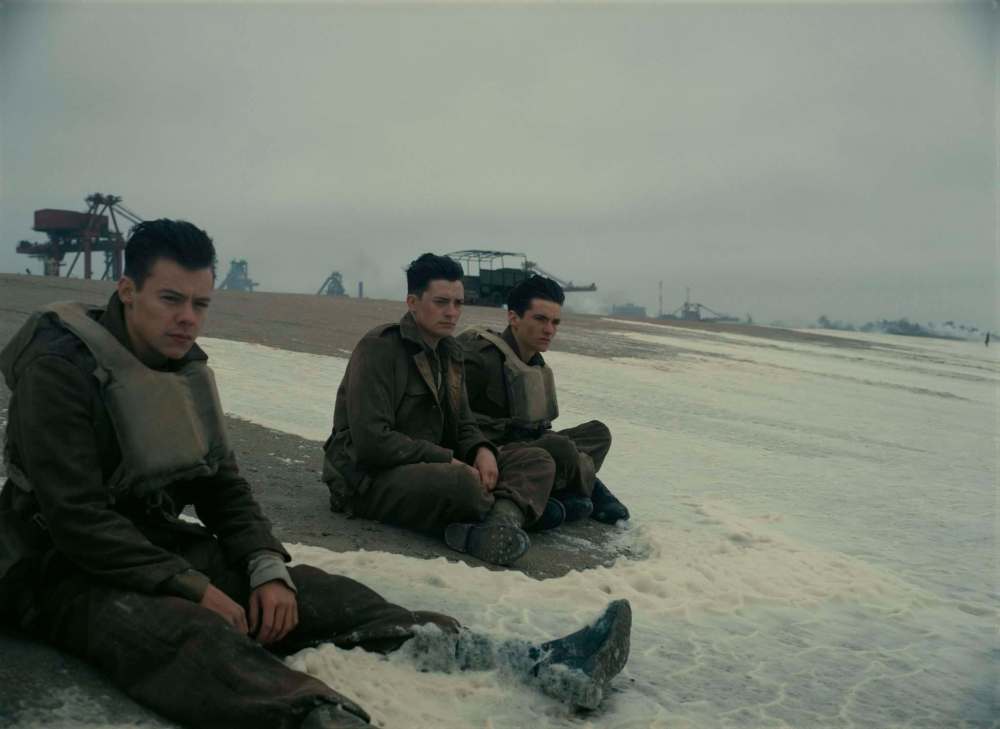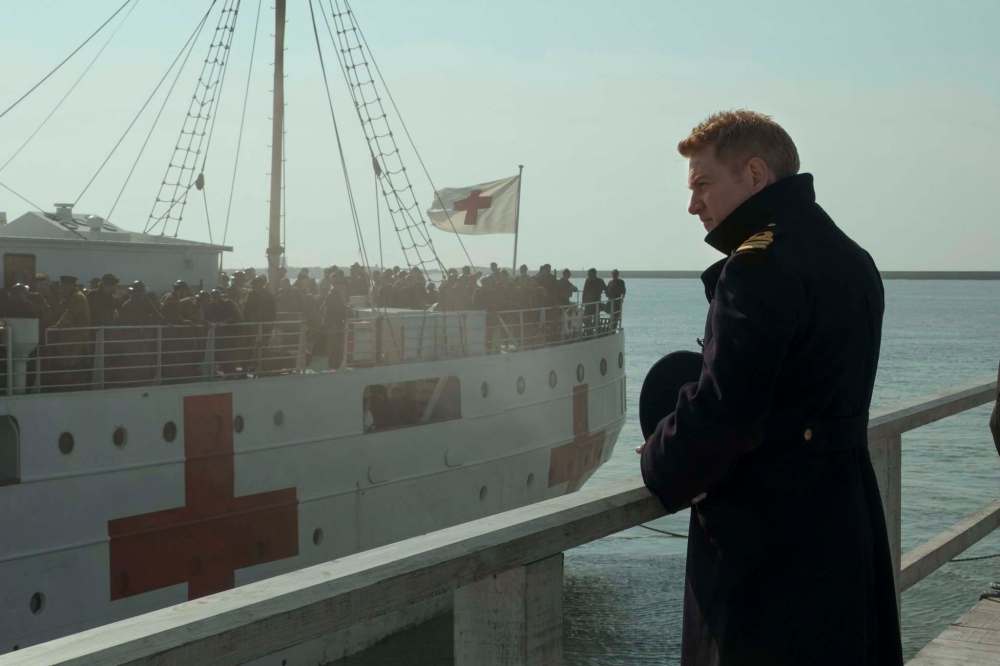Cinematic miracle
Massive-scale Second World War evacuation deserves a massive film, and director Nolan has supplied it
Advertisement
Read this article for free:
or
Already have an account? Log in here »
To continue reading, please subscribe:
Monthly Digital Subscription
$0 for the first 4 weeks*
- Enjoy unlimited reading on winnipegfreepress.com
- Read the E-Edition, our digital replica newspaper
- Access News Break, our award-winning app
- Play interactive puzzles
*No charge for 4 weeks then price increases to the regular rate of $19.00 plus GST every four weeks. Offer available to new and qualified returning subscribers only. Cancel any time.
Monthly Digital Subscription
$4.75/week*
- Enjoy unlimited reading on winnipegfreepress.com
- Read the E-Edition, our digital replica newspaper
- Access News Break, our award-winning app
- Play interactive puzzles
*Billed as $19 plus GST every four weeks. Cancel any time.
To continue reading, please subscribe:
Add Free Press access to your Brandon Sun subscription for only an additional
$1 for the first 4 weeks*
*Your next subscription payment will increase by $1.00 and you will be charged $16.99 plus GST for four weeks. After four weeks, your payment will increase to $23.99 plus GST every four weeks.
Read unlimited articles for free today:
or
Already have an account? Log in here »
Hey there, time traveller!
This article was published 20/07/2017 (3049 days ago), so information in it may no longer be current.
As an historical event, Dunkirk is not an easy or obvious choice for a war movie. It was not a battle but an evacuation, a last-hope rescue of British and Allied forces that played out more through stoic endurance than direct military action.
Likewise, Christopher Nolan seems an unlikely choice to write and direct a war movie. The British filmmaker (The Dark Knight, Inception, Interstellar) has a tendency to get caught up in clever-clever complexity for its own sake, a cinematic tic that can be awe-inspiring or irritating, depending.
Clearly, something about the Miracle of Dunkirk, as it is sometimes called, has gripped him. Nolan finds his subject, with extraordinary results. Immersive and experiential, with you-are-there impact, Dunkirk is both potent and restrained, stringently unsentimental and profoundly affecting. In putting his substantial technical mastery in the service of a powerful true-life story, Nolan has crafted not just his own best film but one of the finest war films of the 21st century.
Dunkirk starts, without lead-up or explanation, in the middle of chaos. In 1940, more than 400,000 Allied soldiers are left trapped and exposed on a stretch of beach in northern France, strafed and bombed by the Luftwaffe, waiting for boats to get them to England before the advancing German army reaches them.
We follow this massive operation, which unspools over a period of days, on three levels: land, sea and air. On the land we have a hard-headed scrabble for survival. Tommy (newcomer Fionn Whitehead) and his friend Gibson (Aneurin Barnard) find a wounded man who has been mistakenly left for dead and pick him up, not out of self-sacrifice but because they’re hoping he will get them priority passage onto a ship.
At sea, we follow a middle-aged, middle-class Englishman (Mark Rylance of Wolf Hall and Bridge of Spies), heeding the call for civilian crafts and heading out in his pleasure boat, joining an impromptu fleet of fishing boats, barges and tugs. Dressed in Donegal tweeds and saying very little, Rylance embodies a certain ideal of modest English heroism.
In the air, we fly with two RAF pilots (Tom Hardy of The Dark Knight Rises and Jack Lowden), getting a vertiginous, precisely rendered view of their aerial dogfights (done mostly with practical effects rather than digital trickery).
Finally, we check in with officers on The Mole, a breakwater wall and makeshift dock that offers the best chance to get soldiers onto the large ships but is also a terrifyingly vulnerable target. Kenneth Branagh and James D’Arcy convey a brief, terse sense of the overall military strategy, including the cruel calculus of who should be evacuated first.

These interlocking stories and overlapping timelines fit together in exact but subtle ways, working with Nolan’s carefully calibrated editing and brilliant handling of scale to convey the full sense of the operation. We move from sweeping views of the beach and harrowing scenes of bombed destroyers sinking within minutes to small, concentrated moments where lives are saved or lost on arbitrary chance or a moment’s decision.
Aided by Hans Zimmer’s music, which is more of a soundscape, often like machine noise you can feel pulsing in your chest, Nolan brings us into the action. Dunkirk is unrelentingly and brutally tense, though rarely graphically bloody.
There is little dialogue, and almost none of the familiar narrative props of the war genre. Characters are presented without backstory. They don’t talk about their plans for after the war or take out pictures of their girls back home. Sometimes we don’t even learn their names. What we do know about them comes out through their actions and reactions.

Performances are uniformly strong but seem to channel “the spirit of Dunkirk” with their unshowy, self-effacing Britishness and commitment to ensemble acting. Harry Styles, best known as a member of the boy-band One Direction, plays an infantryman, and while it might seem cruel to have chucked him in with so many seasoned actors, Styles does all right. In fact, there is a poignant genius to this bit of casting, a reminder that the war was fought mostly by very young men.
Nolan is risking what all filmmakers risk in this genre, namely that his war-is-hell message will be undercut by his medium, which turns raw violence into stunning cinematic form. There is a terrible beauty to many of the images in Dunkirk, but Nolan steadily resists the dangers of war porn, focusing instead on stark survival stories.
There have been film treatments of Dunkirk before, including a rousing reference in Mrs. Miniver, the 1942 film credited with helping to draw the Americans into the war, and an astonishing standalone sequence in 2007’s Atonement. But this is the one to see, with a final, gut-punch visual and emotional effect that demands to be viewed on a big screen.
alison.gillmor@freepress.mb.ca


Studying at the University of Winnipeg and later Toronto’s York University, Alison Gillmor planned to become an art historian. She ended up catching the journalism bug when she started as visual arts reviewer at the Winnipeg Free Press in 1992.
Our newsroom depends on a growing audience of readers to power our journalism. If you are not a paid reader, please consider becoming a subscriber.
Our newsroom depends on its audience of readers to power our journalism. Thank you for your support.


